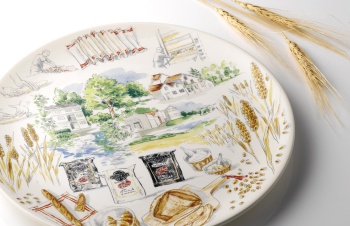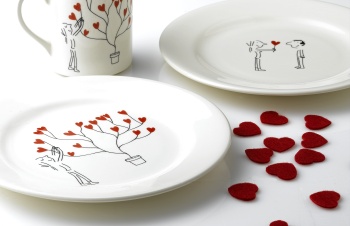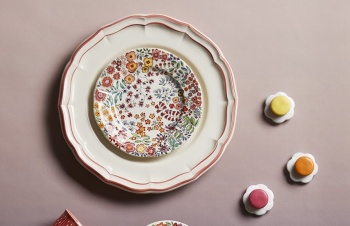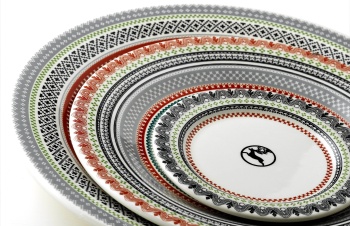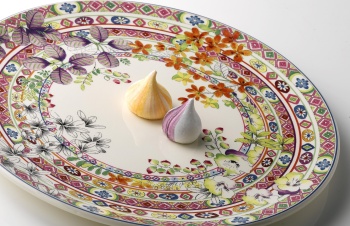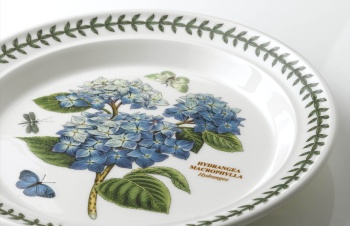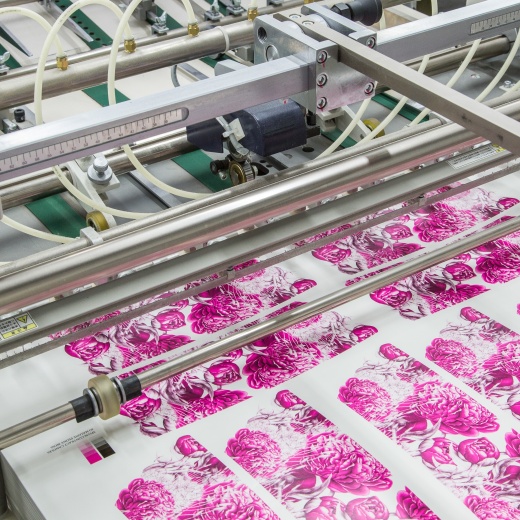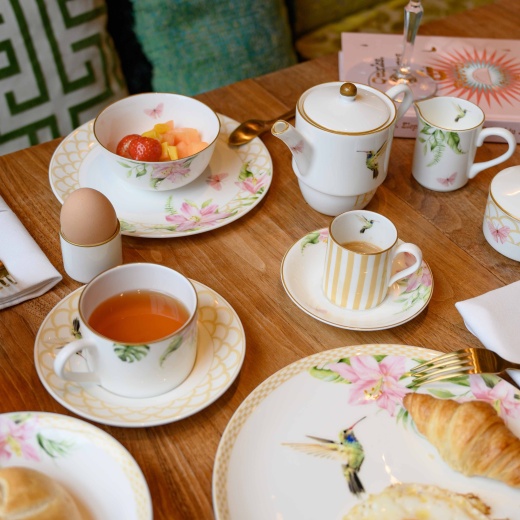Inglaze decal specialists
Inglaze decal supplier
Inglaze decals are applied directly to the surface of ceramic or porcelain items and then fired at a very high temperature. This causes the decal to sink into the glaze, becoming part of the surface and resulting in a smooth, durable finish that is resistant to wear and fading.
Onglaze decals, on the other hand, are applied on top of the glaze and fired at a lower temperature. Whilst onglaze decals offer a marginally wider colour palette, they sit on the surface of the glaze, making them more susceptible to scratching and wear over time. Each method has its unique advantages and is chosen based on the desired appearance and usage of the final product.
In addition to their use on tableware items, inglaze decals are used in the production of sanitary logos for branding purposes. Normally the logo is applied to the raw clay that is coated in powder glaze. The logo and the glaze covered item are fired at the same time to temperatures in the region of 1200 degrees celsius.

Leading inglaze decal manufacturer
Uses and applications
- Tableware that requires greater durability
- Hotelware that is exposed to high levels of dishwasher use
- Sanitary logos for branding of toilets and sinks
- Aesthetic requirements, where are a uniform finish is desired
- Tiles and ornaments
Common questions
Typically temperatures range between 1040 and 1200 degrees Celsius. The higher temperature is mostly commonly used for sanitary firings.Our laboratory team will adapt our colours to suit individual requirements. Colours can require different flux levels depending on temperatures and length of firing cycle.
Inglaze decals have a higher level of durability than onglaze inks. If the item being used is deemed to be high usage, then greater levels of resistance to mechanical scratching and dishwasher use will be achieved. The appearance may also be more desirable when a more rustic look is required.
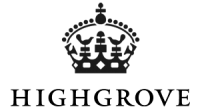













Get in touch
International enquiries welcome
- +44 (0) 1782 839464
- +44 (0) 1782 839464
- sales@siaktransfers.com

